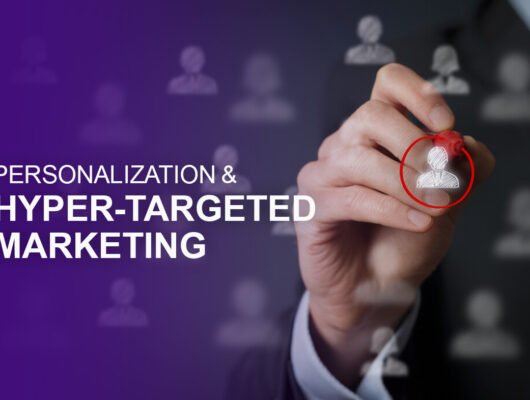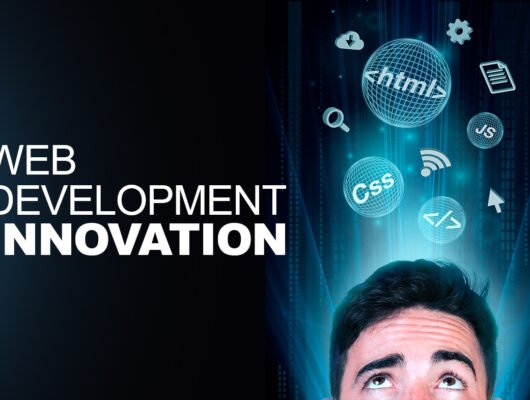Introduction to Growth Hacking
Growth hacking has emerged as a vital strategy within the business landscape, particularly appealing to startups and established organizations seeking rapid expansion. At its core, growth hacking is a disciplined approach focused on discovering and leveraging innovative methods to drive user acquisition and retention, optimizing growth while minimizing costs. Unlike traditional marketing methods, which often emphasize broad advertising campaigns, growth hacking prioritizes efficiency, speed, and creativity through data-driven strategies.
One distinguishing feature of growth hacking is its reliance on experimental techniques. Growth hackers often utilize a wide array of tools and platforms to test various ideas and campaigns quickly, iterating based on real-time feedback and analytics. This iterative approach enables businesses to pinpoint what works best and scale their efforts efficiently. The principles of speed and agility are paramount; as the market landscape continues to evolve, businesses must adapt quickly to changing consumer behaviors and preferences.
Creativity is another defining element of growth hacking. Success often hinges on the ability to think outside the box and develop unconventional strategies. For instance, leveraging viral marketing, search engine optimization (SEO), and social media can create low-cost yet effective channels for reaching and engaging audiences. Growth hackers aim to attract and retain customers without the significant investments typical of traditional marketing tactics.
This dynamic field has gained traction particularly among startups, which often operate under resource constraints and require innovative solutions for growth. However, established businesses are also increasingly adopting growth hacking principles to invigorate their marketing strategies and stay competitive in saturated markets. As such, growth hacking is not merely a trend but rather a fundamental shift in how organizations approach marketing, designed to ensure sustainable growth in a fast-paced digital age.
The Role of AI in Growth Hacking
Artificial Intelligence (AI) is revolutionizing the field of growth hacking by providing innovative solutions that significantly enhance marketing strategies. One of the key technologies driving this transformation is machine learning, which enables algorithms to analyze vast amounts of data and identify patterns that human analysts might overlook. By leveraging machine learning, businesses can segment their audiences more effectively, allowing for tailored marketing campaigns that resonate with specific customer needs.
Predictive analytics is another powerful AI technology that plays a crucial role in growth hacking. This tool utilizes historical data and statistical algorithms to forecast future outcomes. Marketers can employ predictive analytics to ascertain which strategies will be most effective for driving customer engagement and generating conversions. By making data-driven decisions, companies can optimize their resource allocation and drastically improve their return on investment.
Natural Language Processing (NLP) is yet another AI-driven technology that enhances growth hacking efforts. NLP enables machines to understand, interpret, and respond to human language, facilitating customer interactions that are both meaningful and effective. This capability opens the door for personalized marketing content and chatbots that can engage users 24/7, enhancing customer experience and satisfaction. Furthermore, sentiment analysis—an application of NLP—allows companies to assess customer feedback and social media interactions, providing insights into consumer preferences and behaviors.
By integrating these AI technologies into their growth hacking strategy, businesses can craft more targeted and efficient marketing campaigns. The automation and analytical prowess provided by AI not only streamline operations but also empower marketers to focus on creativity and innovation, fostering a culture of continuous improvement. As AI tools evolve, they will undoubtedly contribute to unlocking new levels of growth and opportunity for businesses across various industries.
Identifying Growth Opportunities with AI
In the dynamic landscape of modern business, identifying growth opportunities is essential for sustained success. Artificial Intelligence (AI) tools have become invaluable assets in this regard, allowing businesses to harness data-driven insights. One of the primary techniques employed by organizations is customer segmentation. By analyzing vast amounts of customer data, AI algorithms can categorize individuals based on various factors such as purchasing behavior, preferences, and demographics. This nuanced classification enables marketers to tailor their strategies, ensuring that they effectively address the unique needs of different segments, which can significantly boost conversion rates and customer satisfaction.
Another critical aspect of leveraging AI for growth is behavioral analytics. This technique involves monitoring and interpreting user interactions across various platforms, from websites to social media. AI tools can track user behavior patterns, highlighting how potential customers engage with a brand’s content. This data not only helps marketers understand user intent but also identifies which touchpoints are most effective in driving conversions. By optimizing these touchpoints, businesses can refine their marketing approaches, ultimately leading to increased revenue and customer loyalty.
Additionally, trend analysis facilitated by AI tools allows businesses to stay ahead of market changes. By monitoring social media trends, consumer sentiment, and emerging technologies, AI can identify potential growth areas before they become mainstream. This proactive approach empowers companies to pivot their strategies and capitalize on trends as they emerge. The ability to swiftly adapt to changing conditions sets successful businesses apart in a competitive marketplace. By integrating customer segmentation, behavioral analytics, and trend analysis, organizations can effectively harness the power of AI to pinpoint and exploit growth opportunities that align with their overall strategy.
Content Creation and Optimization Using AI Tools
In the evolving landscape of digital marketing, artificial intelligence (AI) has emerged as a powerful ally in content creation and optimization. By leveraging various AI tools, marketers can enhance their SEO strategies, generate high-quality content, and provide personalized recommendations to their audience, ultimately driving user engagement and conversion rates.
One significant area where AI excels is in SEO optimization. Tools like Clearscope and Surfer SEO analyze top-performing content within a specific niche and provide insights on the ideal keywords to target. This allows content creators to craft articles that are not only informative but also rank higher in search results, increasing visibility. These tools assess readability and keyword distribution, ensuring that content resonates with both search engines and readers.
In addition to SEO, AI tools like OpenAI’s GPT-3 have revolutionized content writing. These platforms enable creators to generate articles, blog posts, and marketing copy quickly and efficiently. With the ability to understand context and tone, AI-generated content can be tailored to match the brand’s voice, resulting in cohesive communication across various channels. Furthermore, these tools can assist in brainstorming ideas, saving valuable time during the content creation process.
The personalization of content is another significant implication of AI in digital marketing. Tools such as HubSpot and Marketo utilize algorithms to analyze consumer behavior, allowing marketers to deliver tailored content that meets the specific needs and preferences of their audience. This level of customization can enhance user experience, encouraging higher engagement rates and, consequently, improved conversion rates.
Incorporating AI into content creation and optimization processes not only streamlines operations but also supports a more strategic approach to digital marketing. By embracing these advanced technologies, marketers can unlock new opportunities for growth and connect more effectively with their target audience.
Enhancing Customer Experience Through AI
Artificial Intelligence (AI) has transformed the way businesses interact with their customers, leading to a significant improvement in customer experience. One of the most notable applications of AI in this context is the use of chatbots. These intelligent systems facilitate instant communication, enabling companies to address customer inquiries at any time of day. By using natural language processing, chatbots can understand and respond to customer queries effectively, reducing wait times and enhancing satisfaction levels. The ability to provide immediate responses is vital in today’s fast-paced environment, often leading to higher customer retention rates.
Automated customer service is another area where AI tools shine. Businesses are increasingly integrating AI-powered systems into their customer support functions. These systems streamline operations by automating routine tasks such as order tracking, appointment scheduling, and issue resolution. This not only frees up human agents to handle more complex inquiries but also contributes to operational efficiency. Moreover, AI tools can process vast amounts of data in real time, allowing for quicker responses to customer needs, which in turn enhances the overall customer experience.
Personalized marketing, enabled by AI capabilities, plays a crucial role in improving customer engagement. By analyzing customer behavior and preferences, AI tools facilitate targeted marketing strategies that cater to individual needs. This level of personalization makes customers feel valued and understood, fostering brand loyalty. Through segmentation and predictive analytics, businesses can anticipate customer behaviors, offering timely recommendations that resonate with the audience. Such targeted approaches are effective in driving conversion rates and amplifying customer satisfaction.
As we continue to witness advancements in AI technology, the potential to enhance customer experience will only expand. Companies embracing these innovations will likely see increased customer loyalty and satisfaction, solidifying their competitive advantage in the market.
Measuring Growth with AI Analytics Tools
In the realm of growth hacking, the ability to measure progress effectively is of paramount importance. Businesses are increasingly turning to AI-powered analytics tools to gain deeper insights into their marketing performance. These tools leverage sophisticated algorithms and machine learning to process vast amounts of data, enabling organizations to track performance metrics accurately and efficiently.
Key performance indicators (KPIs) play a critical role in growth hacking strategies. Common KPIs that businesses should focus on include conversion rates, customer acquisition costs, customer lifetime value, and engagement metrics. By monitoring these indicators, organizations can better understand customer behavior and identify areas for improvement. AI analytics tools take this a step further by analyzing historical data, identifying trends, and forecasting future performance. This allows businesses to make data-driven decisions that enhance their growth strategies.
The integration of AI in analytics not only streamlines the data analysis process but also enhances the quality of insights generated. For instance, AI tools can segment audiences based on behavior, preferences, and demographics, helping businesses tailor their marketing efforts more effectively. Additionally, these tools can automate the reporting process, providing real-time insights that empower teams to act swiftly in response to market changes.
Ultimately, the combination of AI-driven analytics and a robust understanding of KPIs enables organizations to optimize their marketing strategies proactively. By harnessing the power of AI, businesses can continuously refine their approaches, enhance user experiences, and drive growth in an increasingly competitive landscape. As companies adopt these advanced analytics tools, they gain a significant advantage in understanding their performance and unlocking new opportunities for growth.
Cross-Functional Team Collaboration Enhanced by AI
In the contemporary landscape of business, effective growth hacking demands seamless collaboration between various departments, including marketing, sales, and product development. The integration of Artificial Intelligence (AI) tools significantly enhances this collaboration, paving the way for innovative strategies and shared insights. AI facilitates improved communication by providing platforms that ensure all team members are aligned, thus optimizing the growth hacking process.
One prominent AI-driven collaboration tool is Slack, which uses intelligent features to streamline communication among team members across departments. It allows users to create shared channels, integrate with other tools, and automate updates that provide real-time visibility into ongoing projects. This feature is particularly beneficial for fostering teamwork and ensuring that all stakeholders are informed about the latest developments, which is key to executing effective growth strategies.
Moreover, platforms such as Trello and Asana leverage AI to enhance project management. These tools help teams visualize tasks, assign responsibilities, and monitor progress collectively. By utilizing AI algorithms, these platforms can prioritize tasks based on urgency and potential impact, ensuring that team members focus on initiatives that drive growth. The ability to share feedback and track project timelines in one centralized location enhances transparency and accountability, which are crucial for implementing growth hacks.
Additionally, AI-powered analytics tools, such as Tableau or Google Analytics, enable cross-functional teams to gain valuable insights from customer data. By analyzing this data collaboratively, teams can identify trends, understand customer behavior, and refine their strategies accordingly. The shared knowledge obtained from these insights fosters a more cohesive approach to growth hacking, ensuring that marketing, sales, and product development are working towards a common objective.
By embracing AI tools to facilitate cross-functional collaboration, companies can enhance their ability to implement effective growth hacks, leading to sustainable business success.
Case Studies of Successful Growth Hacking with AI
In the contemporary landscape of digital marketing, several firms have leveraged artificial intelligence to optimize their growth hacking strategies significantly. For instance, Netflix employs AI-driven algorithms to enhance user experience by analyzing viewer preferences and recommending content tailored to individual tastes. This growth hacking technique has allowed Netflix not only to retain subscribers but also to increase the amount of time users spend on the platform, ultimately leading to higher revenues. The challenge here focused on the balance between algorithm efficiency and user privacy, which the company navigated by ensuring robust data protection measures.
Another compelling example is Airbnb, which utilizes AI to improve its pricing strategy. By analyzing various factors such as seasonality, local events, and competition, Airbnb’s machine learning models assist hosts in determining optimal prices for their listings. This flexibility has resulted in increased bookings and revenue for hosts whilst enhancing the overall customer experience. Nevertheless, the integration of AI posed challenges, particularly in aligning algorithmic suggestions with human intuition, which required continuous tweaking and monitoring.
Moreover, HubSpot provides a strong example of using AI tools for customer relationship management. By automating repetitive marketing tasks and personalizing email campaigns based on user behavior, HubSpot successfully increased lead conversion rates. However, the early phase of implementation revealed hurdles in correctly interpreting user data, illustrating the necessity for ongoing training of AI models to ensure precise targeting and effectiveness. These success stories exemplify how integrating AI tools into growth hacking efforts not only drives substantial results but also requires careful consideration of the resulting challenges. Thus, learning from these examples can provide actionable insights for organizations looking to implement their growth hacking strategies with AI effectively.
Future Trends in Growth Hacking and AI
The future of growth hacking is set to undergo significant transformation as artificial intelligence (AI) technology continues to develop and become integrated into marketing strategies. One of the key advancements expected is the enhancement of predictive analytics capabilities. By leveraging AI, businesses can analyze vast amounts of data to predict customer behavior more accurately. This predictive power will allow organizations to tailor their marketing strategies in real-time, offering personalized content and product recommendations that align closely with individual customer preferences.
Another trend that is emerging is the automation of customer interactions through AI-driven chatbots and virtual assistants. These tools not only streamline the customer service experience but also facilitate personalized engagement. Businesses can utilize these systems to gather insights about customer queries and preferences, thereby refining their growth hacking strategies to address specific pain points. As AI continues to evolve, we can anticipate increasingly sophisticated interactions that will enhance customer satisfaction and drive conversion rates.
However, the integration of AI in growth hacking also raises ethical considerations concerning data privacy and usage. Companies must navigate the fine line between leveraging customer data for marketing purposes and respecting individual privacy rights. Regulations like the General Data Protection Regulation (GDPR) underscore the necessity for businesses to implement transparent data practices. Future growth hacking strategies should therefore prioritize ethical considerations, ensuring that data is collected and utilized responsibly without compromising customer trust.
Overall, as AI technology continues to intersect with growth hacking, businesses should remain vigilant regarding new trends and the ethical implications of their strategies. Staying ahead of these developments will be essential for organizations seeking to maintain a competitive edge in an ever-evolving digital landscape.







